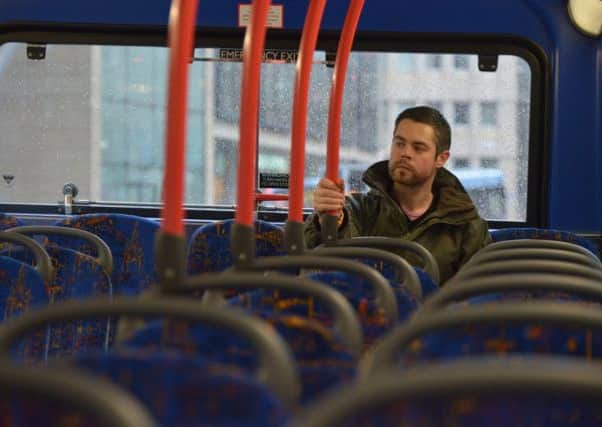Scots commuters shunning public transport for cars


There has been a fall in the number of people using public transport or walking, statistics show, with almost two-thirds of working Scots – around 1.3 million – opting instead for the car or van.
The number of Scots prepared to walk into work has fallen to about one in ten, while cycling is up just 0.1 per cent to 1.6 per cent of all workers, according to the latest census results.
Advertisement
Hide AdAdvertisement
Hide AdThere are now fears that the dangers that cyclists face on Scotland’s roads and a spate of high-profile fatalities could be putting people off taking the bike.
Edinburgh bucks the trend with well under half (41 per cent) of commuters in the capital taking the car. And almost a third (30.7 per cent) of workers in the capital travel to work by bus or train, the highest proportion in Scotland.
But across the country as a whole, the proportion taking the bus has fallen from 12 per cent in 2001 to 11 per cent in 2011 and the same drop has been seen in those walking to work. Train use is up slightly, from 3 per cent in 2001 to 4 per cent in 2011.
The findings have prompted concerns from environmental campaigners, who say government initiatives to get people out of their cars are not working.
“It’s not an encouraging picture, but the results aren’t a surprise,” said Green MSP and transport spokeswoman Alison Johnstone.
“Edinburgh has seen progress because the council has been prepared to invest in cycling infrastructure. Currently they are spending 5 to 6 per cent of their transport budget on cycling, but in lots of other local authorities nothing is being spent.”
The capital has its own dedicated cycling officer, with “bike corridors” being established in the city to get people out of the car, while Glasgow and Fife are making moves to encourage cycling.
“If we want to see progress nationally we need to have a joined-up safe cycling network,” Johnstone added.
Advertisement
Hide AdAdvertisement
Hide Ad“But there’s a perception that this isn’t a safe activity, which puts people off.”
There was a public outcry when motorist Gary McCourt, 49, escaped jail last year after causing the death of cyclist Audrey Fife, 75, in Edinburgh in 2011. He had previously caused the death of another cyclist in the city in 1986.
The number of cycling deaths in Britain reached a five-year high of 122 in 2012 – with 14 in London and three around Edinburgh.
The number of people driving to work has risen by about 100,000 to 1.3 million between the last census in 2001 and the most recent comprehensive nationwide survey in 2011 – up from 59 per cent to 63 per cent.
There has also been a fall of about 40,000 in the amount of people commuting as passengers in cars or vans, from 9 per cent to 6 per cent.
Scots who walk to work or take the bus also decreased in each case from 12 per cent in 2001 to 11 per cent in 2011.
Johnstone added: “It’s not at all surprising. The Scottish Government sees investing in transport as investing in motorways. It constantly has not invested in walking and cycling. It’s currently spending 1 per cent of a big transport budget on active travel – they’re getting what they’re paying for.”
A spokeswoman for Friends of the Earth Scotland added: “If the Scottish Government are serious about getting people out of their cars then they need to invest in serious improvements to walking and cycling infrastructure.
Advertisement
Hide AdAdvertisement
Hide Ad“More support for active travel is a bit of a no-brainer. It’s not just good for the climate, people’s health and wellbeing, but it can also help boost local economies and save money for the public purse.”
A spokesman for Transport Scotland pointed to investment in recent years in training, infrastructure and road safety campaigns for cyclists and pedestrians, with £20 million allocated to “active travel” over the next two years, on top of £58m already earmarked.
A Transport Scotland spokesman said: “The Scottish Government is committed to making it easier for more people to incorporate active travel choices into their daily routines by cycling and walking.”
Twitter: @ScottMacnab